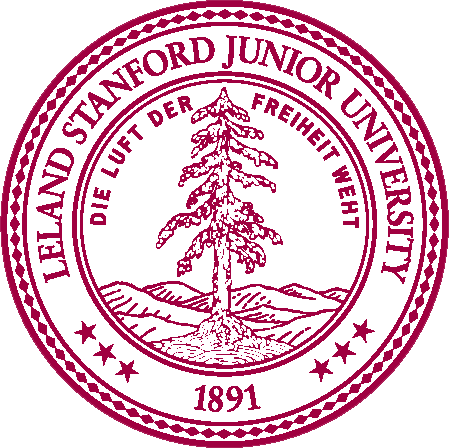
This is last year's website! Click here for this year's website and content.
Course Information
Description:
This course will focus on cutting-edge computational techniques used to study the structure and dynamics of biomolecules, cells, and everything in between. These techniques play an increasingly important role in molecular biology, drug discovery, personalized medicine, and bioengineering, and draw on a variety of computer science and applied math techniques.
CS 279 and CS 371 cover the same general topical areas, but whereas CS 279 is a foundational lecture-based course, CS 371 is devoted primarily to reading, presentation, discussion, and critique of papers describing important recent research developments. (Neither of these courses is a prerequisite for the other.)
Specific topics include computational structure prediction for proteins, DNA, RNA, and larger macromolecular complexes; drug screening; predictions of protein-protein interactions; protein design; computational methods associated with superresolution imaging, single-particle electron microscopy, and x-ray crystallography; “citizen computing” using multiplayer online games; and machine learning applications in structural biology.
Course objectives: This course has several learning goals. In particular, my hope is that students will:
- Gain exposure to cutting-edge computational research in structural biology, broadly defined.
- Learn to critique and evaluate research, and practice critical reading of research papers.
- Refine the skill of presenting deep technical material to a non-expert audience.
Prerequisites: Elementary programming background (CS 106A or equivalent), introductory course in biology or biochemistry, and ideally some experience in mathematical modeling (does not need to be a formal course). Prerequisites are not strictly enforced. What really matters is that students feel comfortable discussing computational biology research papers (without any expectation that they be experts in the area).
Instructor: Ron Dror
- Office Hours: Thursday 4:20 - 6:00 PM in Gates 204, or by appointment.
- Office Hours: Wednesday 11:30 AM - 12:30 PM in Lathrop Tech Lounge
If you have issues that cannot be resolved on Piazza, please contact us at cs371-win1516-staff@lists.
Class: Tuesdays & Thursdays from 3:00 PM - 4:20 PM, Econ 140 (Landau Economics Building)
Announcements: All announcements will be made on Piazza. Subscribe to the class forum here.
Materials: There is no textbook. We will provide pointers to a variety of required and optional reading material (mostly journal papers); these are freely available to Stanford students.
Coursework
This course has no problem sets, exams, or projects, but students are expected to do the following:- Presentation: Each student is expected to pick one of the topics below (or an alternative topic they propose) and present on one or more papers on this topic. The instructor and the TA will meet with each student to help with these presentations, and in particular to ensure that the presentations are interesting and accessible to non-experts in the class. Before preparing your presentation, please see slides 57-59 of the first lecture, and Tips for Giving Clear Talks by Kayvon Fatahalian.
- Critiques: Each student is expected to write critiques of three of the papers presented in class by other students. Each student is assigned two critiques on the schedule page, and can write the third critique on any of the main papers beign presented. Each critique should be two to three pages in length, and should not just summarize the paper but demonstrate critical thinking about the paper. For example, a critique might comment on the paper’s strengths and weaknesses, on alternative methods that might have been applied, or on possible extensions of the work. Students should submit critiques by emailing them to cs371-win1516-staff@lists.stanford.edu. Critiques must be submitted before the paper is presented in class, and students are encouraged to share these thoughts when the paper is being discussed in class. Late submissions will not be accepted (exceptions will be made under extenuating circumstances – please email the TA).
- Attendance and participation: Because this course centers around in-class presentations and discussion, attendance is mandatory. Participation and engaging the material are vital for this class. Students are expected to have read the papers to be discussed in each class, and to participate in class discussions.
Course grades will be based roughly one-third on presentations, one-third on critiques, and one-third on attendance and participation. These fractions will be adjusted based on the relative number of presentations and critiques performed. Grading will be generous, but the honor code will be strictly enforced — in particular, presentations and critiques must be written in your own words, apart from text that is in quotes and properly cited. Sources must always be cited (for example, when showing figures from a paper in a presentation).